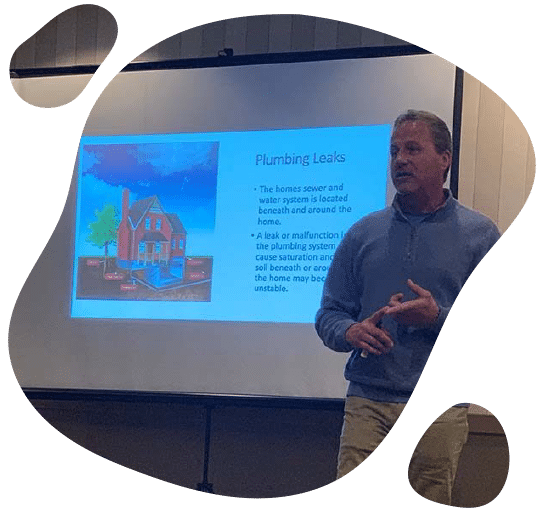Installer Training
MHS provides training and certification to authorize installers in the installation of the Empire Piers helical piles. There are 3 primary reasons for training and certification:
- Safety – To teach proper safety practices in installing helical piles and prevent injuries, accidents, or possible property damage.
- Installation procedures – To ensure proper installation so piles will support specified loads and prevent warranty or call backs, and to prevent damage to material during installation.
- Profitability – To teach installers how to install piles in a timely manner and not sacrifice safety protocols or procedures, and demonstrate how to properly bid projects based on our abundant experience.
Sign Up For Installer Training

Why Installer Training Is Needed
In 2007 The ICC approved acceptance criteria for helical piles. Prior to that the foundation industry relied on Legacy reports. Legacy reports did not provide capacities for how the components functioned as a system. Today’s ICC AC358 report provides compliance with the performance features of the products.
The criteria provide methods to establish the allowable load and deformation capacities of helical pile systems and devices used to resist axial compression, axial tension or lateral loads. The criteria apply to helical pile systems and devices as defined in IBC Section 1802 and Section 1.4 and includes provisions for determining soil embedment and soil capacity.
The AC358 criteria recognizes four helical pile applications, remedial repair with an eccentric load. A direct compressive load for new construction and floor slabs and tension loads for tiebacks.
The components of the “system” must be evaluated by the bracket and attachment to the foundation, shaft buckling and eccentric moments. The helical plate capacity and soil interaction capacity.
The ICC (International Code Council) has revised chapter 18 “Soils and Foundations” of the 2009 International Building Code (IBC) and added helical piles to the model code. The ICC-ES (International Code Council Evaluation Service) is the most recognized evaluation service in North America and uses AC 358 (acceptance criteria for helical piles and devices) used in the evaluation for helical pile and pier products. Helical piles shall be installed to embedment depth and torsional resistance criteria as determined by a registered design professional. Any reports that ICC puts out for a helical pile product by the manufacturer must meet the testing and requirements as identified by AC358.
Contact MHS for any assistance with designing your helical pile project to meet the above criteria.
